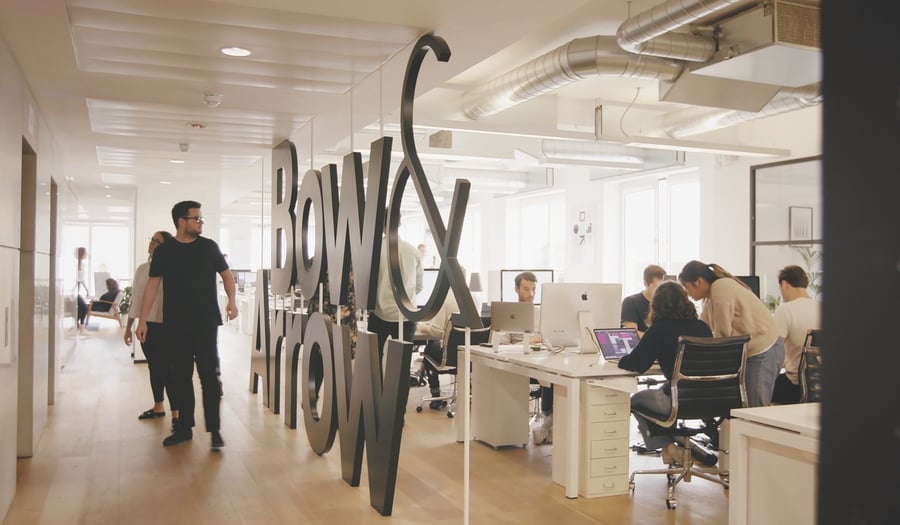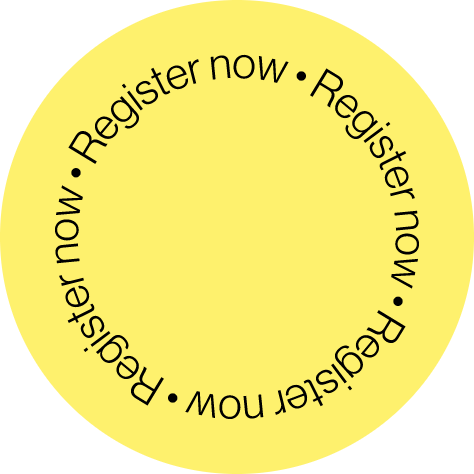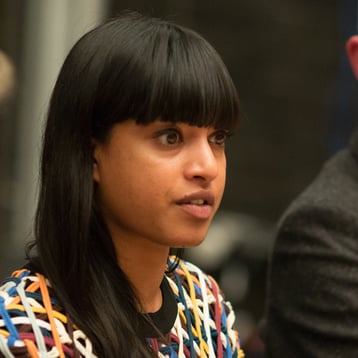
This week, we are featuring Natasha Chetiyawardana, Creative Partner and Founder of white space digital innovation firm Bow & Arrow.
Bow & Arrow identify and create new digital products, services and ventures that fulfil unmet customer needs and deliver diversified revenue streams. Working with clients including BMW MINI, Google, Boots, American Express and Wall Street Journal, Bow & Arrow focus on high-impact innovation that lands in market. Delivered by a digitally-native, impact-obsessed team combining commercial, strategy, product, creative and design skillsets, B&A start-up teams work as one from brief to launch.
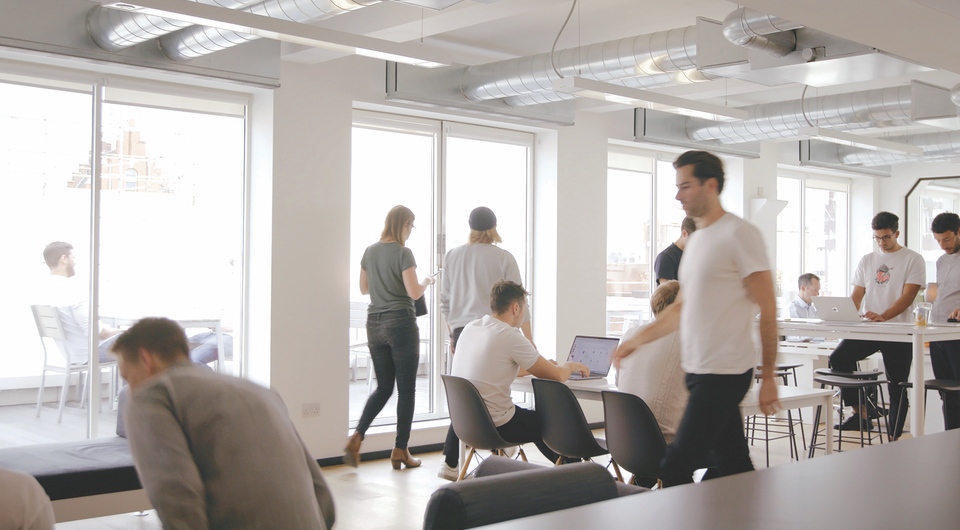

YOUR STORY
Please tell us about you and your story … your path into innovation strategy, and then into launching and scaling Bow & Arrow.
I’m sure whatever path I would have followed – I ended up going to design school sort of by accident and never intended it to be a long-term plan – I would have ended up in innovation. It feels like it’s in my blood and my brother has won multiple awards as an innovator. Feels second nature because I’m a mixture of strategy and creativity. When I was at Central Saint Martins (CSM) my final project was an innovation project and I said to everyone – this is what I want to do – come up with the idea, brand, how it’s going to engage people and make money and everyone told me that that job didn’t exist!
After CSM, I won designer of the year, travelled around the world exhibiting my work, moved to New York and worked my way through packaging, branding, product agencies who were starting to get innovation briefs and they naturally came my way. I became known for doing that and became very frustrated that what was out there wasn’t as strategic or commercial as I knew was the answer. Saying this to my friend, Cindy Gallop – ex chairperson of BBH and now feminism and diversity activist – she jumped on it and professionally matchmade me with my business partner Ben who has a strategy and commercial background. We hadn’t worked together but looking back on it, it makes complete sense it would work. We were both dissatisfied with what we saw out there and although our mindset was very similar our skills were not duplicative and were extremely complementary. At the risk of making it sounds like a fairy tail...it was a match made in heaven and we are very grateful to Cindy!
THE EVOLUTION OF THE INDUSTRY
How do you think the service of innovation is changing?
It’s a bigger pie now which I see as a very good thing.
When we started, the CMO used to be the buying centre but didn’t really have budget allocated to innovation, so it was hard. Now, our customers are chief revenue officers, chief customer officers, chief innovation officers or the CEO. Growth and innovation is a mindset and a real desire and imperative, so it’s become easier.
The thing that hasn’t changed – yet – is the ability to get recognition and reward for innovation. I happily judge design competitions, but I know there is much more scope out there for people that have not just designed an idea but come up with it – the name, the business model, the strategy etc too – and get industry recognition for it. This, in turn, will also enable education to take a closer look at the industry and build tertiary education around it.
I am also seeing a bit of a change in involvement of creativity within Innovation. We use our creatives on really strategic problems: really understand deep customer needs and emerging behaviours, creative commercial opportunities, analogous business models and we have worked hard to get our designers from the back room to the board room...and it has made a huge difference to our offering vs others. Equally, our strategists are extremely creative and bring a lot of creativity to idea generation, prototyping and UX.
TESTING THE TEMPERATURE OF TODAY
What does the current state of change mean for the innovation consulting industry? And, who will succeed and who will fail?
In any recession (we started in one) the instinct in most industries (unless you’re in food delivery or exercise) is to hunker down, reduce all spending, especially on things that don’t seem to be urgent to putting out the fire in front of you. And most people are resistant to change and evolution. BUT this current state is an unprecedented situation and putting your head in the sand is a quick way to become obsolete. The challenges lie in growth for a company – the products or services that they had may not be the ones that will serve them in the new future. Which means – and I guess I would say this - companies crucially will need to think about what the new products or services are that will be the ones that move them forwards. The companies that fail will be the ones that are playing catch up e.g. ones that haven’t sorted their digital presence and the ones that win will be the ones that innovate here.
This is the moment when companies can, will and need to reinvent themselves, and what they do.
New technologies plus the sudden mandate to be in a digital world enables it. And people are demanding it – they will be searching for meaning, something better, something new and something good is what will win out. Not just the same old shit. This time is a gift, and companies like ours will seek out the clients that truly want to drive change.
I am also very passionate about culture and looking after your people – and I’ve said this to you guys before – I think the losers will be organisations that haven’t cared about culture or seen it as one of the most important things you can do in a business. The world is now global, and employees are starting to realise that they can work wherever they want and that the golden handcuffs of free lunches and gyms onsite aren't going to be enough in the future. So you have to do something interesting and meaningful in both cases – what you do both for your customers and your employees, has to be something meaningful and resonant so that they have a reason to stay with you. All bets are off now.
You have to have purpose and people at the heart of what you do, even if it’s tech that’s fuelling the growth.
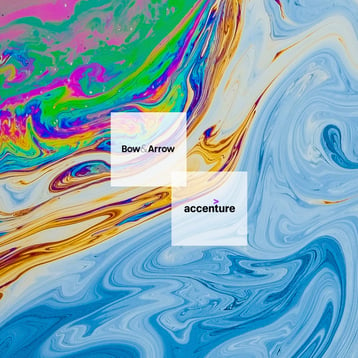
THE IMPACT OF ACQUISITION
The consulting landscape is shifting. Please tell us more about your story, having recently joined Accenture; tell us about the upside (and downside) plus what this means for talent.
It used to be quite siloed in our industry and the huge amount of M&A has changed the innovation landscape a lot. The realisation of the need of the combination of strategy + creative + commerciality wasn’t one only Ben and I had all those years ago! But I think it is quite a different thing to try and marry entities that were until now separate both in terms of discipline but crucially because of culture. Observing that, I am very proud that we were created by a designer and a strategist together, from inception and it’s in our DNA and in everything we do – it’s not a forced fit.
Saying that, I think it’s easy for people to be very cynical about M&A. I can see how it looks from the outside. We made the decision very early on about why we wanted to do it. We decided not to go for PE or VC – we didn’t do it for an injection of cash. We wanted to do it strategically – to enable the business for its next phase – of growth, for opportunities for our people, for global scale for better reach. I think having that strategy made it very different for us. And we looked at it in exactly the same way we look at our clients – we wanted to work with good people that personally wanted to create change and impact in the world. We filtered ruthlessly to find that...I’m very glad we did otherwise I may not be smiling now!
BOW & ARROW
What makes Bow & Arrow different? From your culture and secret sauce, to your approach to solving for client challenges plus how you bring about change and drive growth.
How long have you got?? I’ll try and break it down...
1) Start-up teams: we work in multi-disciplinary start-up teams because we want all our people to be empowered and autonomous and to train them as leaders, and we want them to always think like a start-up, no matter our size or age – to be entrepreneurial, fast, nimble and hungry...because that’s what will enable the most innovative results for our clients. It also means there are no handovers or dropped balls, because this cross-functional team stays with the project the whole way through. Sounds simple enough, but the structure is quite unusual.
2) Values-driven business. We hold ourselves to account on our Values in terms of how we behave together and with our clients. It means we go into everything with a can-do attitude, we challenge ourselves and our clients continually, we don’t rest until the work exceeds expectations, and we drive towards growth not just in terms of results but in ourselves and in our clients as people – constantly learning and bettering ourselves. And crucially this is quantified – in the way we measure our projects (setting out tangible outcomes at the beginning of a project) and also in ourselves – we do our reviews half based on quantitative measures but also half on our Values and mindset.
3) I would say this ... but having half the company come from a design background not only allows creativity to permeate all our thinking but because we have designers involved not at the end but from the beginning it means we make our work tangible and real right from the get go. That means our clients get it much quicker and get excited because it’s real - not just theory or Powerpoints – which I think means we get to results more quickly.
4) A Millennial workforce. Now I know a lot of people will say they have this, but the difference is that we don’t hide them behind pool tables and nap rooms in the office...they are out in front, presenting their own work to our C suite clients. This is very different and even though some new clients may be surprised or unnerved by it at first, when they see the brilliance these people are capable of, they soon get how unique and incredible it is.
EDUCATING THE AUDIENCE
What advice would you give to those looking to break into innovation consulting? What would you tell your former self?
First – not all are the same. Look to what you want out of life and work and find the organisations that fit with what you want. Culture is as important as the work. It’s hard to speak for everyone – can only speak for B&A. We interview on mindset as much as skillset and we interview across the organisation and disciplines – so someone needs to understand, if not do, all the disciplines.
We say we look for Genius Misfits.
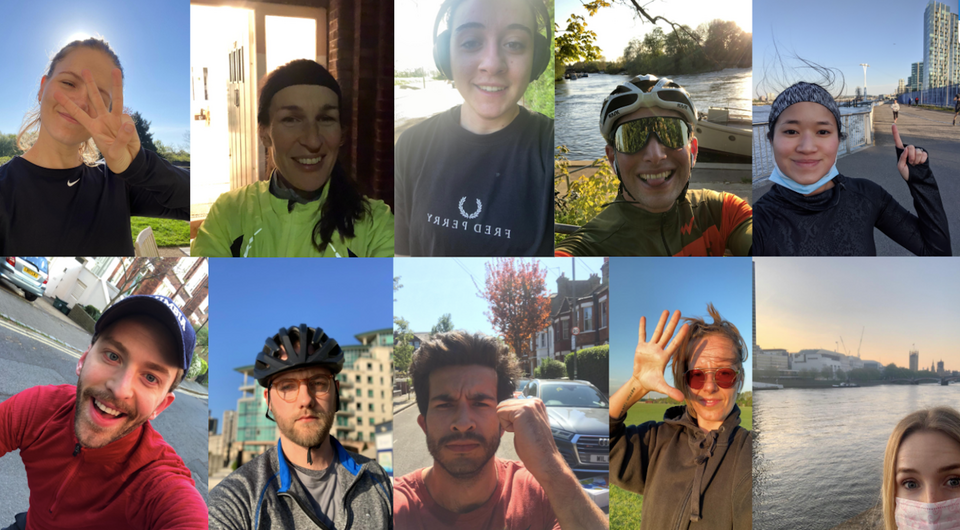
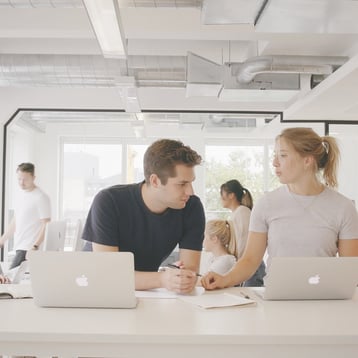
– people that have multifaceted experiences and backgrounds and we like it when we see someone that has an entrepreneurial background – big tick for us – as opposed to an obvious trajectory as that brings diversity of thought and an attitude towards getting stuff done rather than talking about it. We are a roll up your sleeves over pontification kinda organisation. So therefore, we also like it when people have multi-skills under their belts, be that digital tools, video, etc. It’s not a surprise we’ve had ex-chefs, a barrister, a couple of ex actors...we love that diversity of thinking and skillset.
CLOSING THOUGHTS & WORDS OF INSPIRATION
What makes what you do rewarding and exciting? And why do you do it?
Like I said at the beginning – I feel like innovation was what I was born to do...but that’s because it allows a real mix of my skillsets, personality, interests and my eye on the future. I still get such a buzz from the projects and the opportunities and the people I meet. It’s very different being able to spar with the C Suite vs what I could do as a designer. And crucially now, the thing I get excited about is being able to create systemic change – this is a world in which diversity and inclusion is finally being talked about on a global level. And the pandemic has shown that business has to truly look to doing real good and enabling positive change in the world. The possibility and enablement to do that now is something I really have my eye on and want to be able to create in the not too distant future.
To listen to the full interview, hit the Soundcloud link below...

